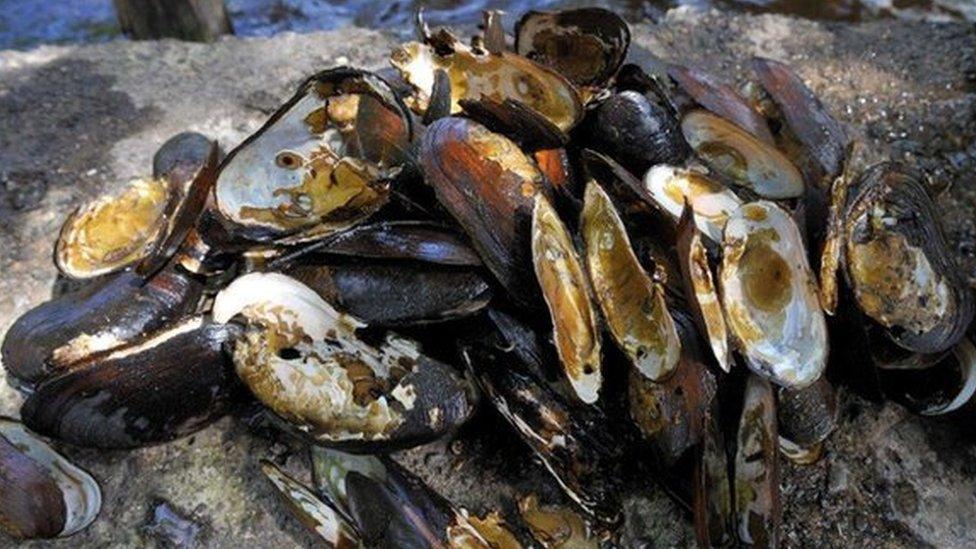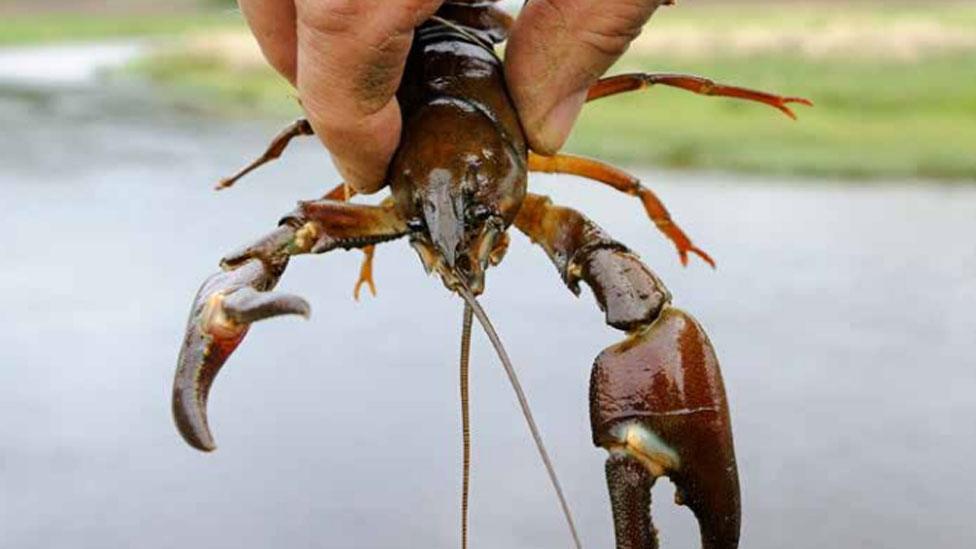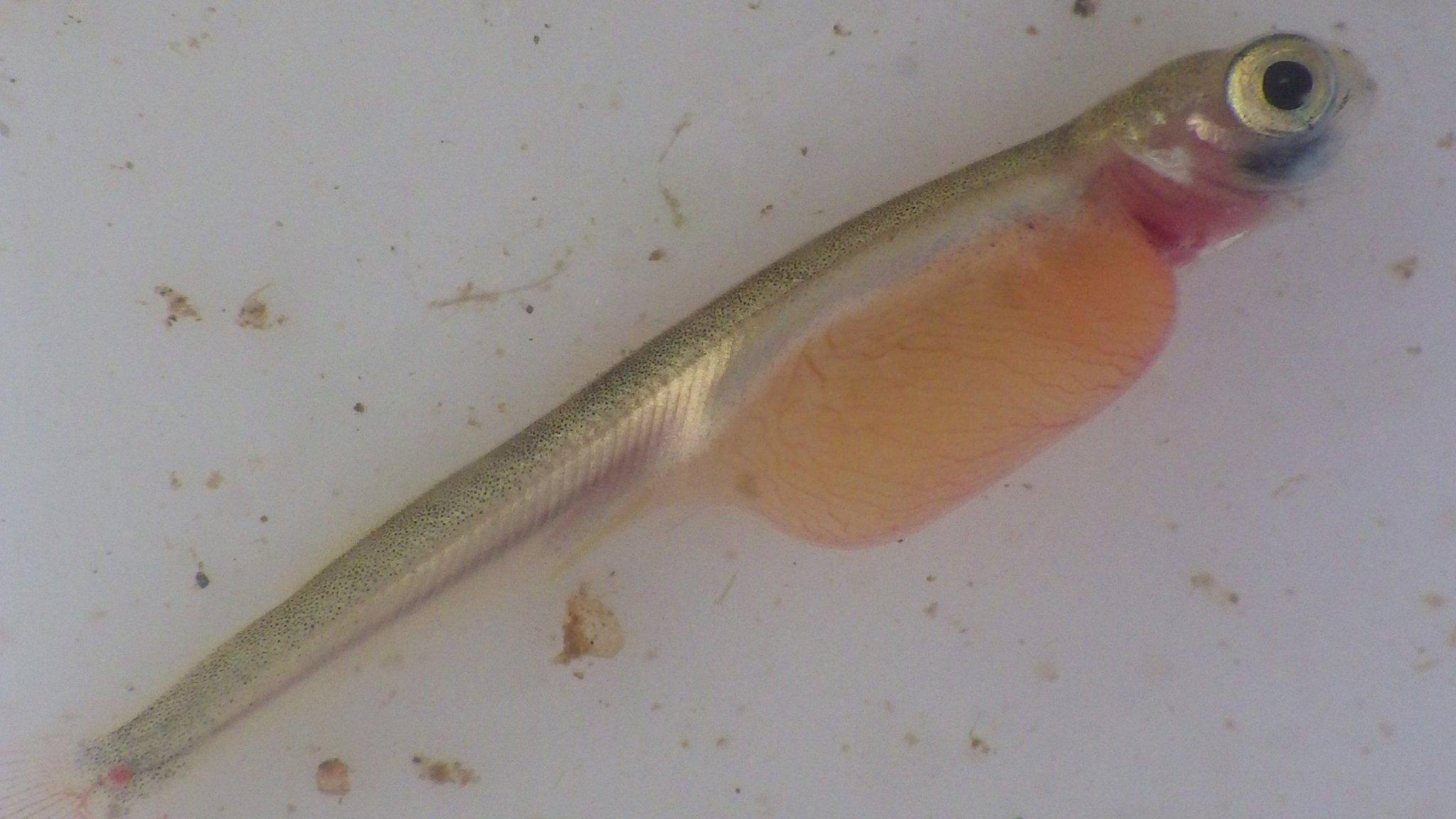Invasive species included in Inverness eDNA research
- Published

Pearl mussels, a native species included in the research, are vulnerable to poaching
Researchers hope environmental DNA (eDNA) can provide new information on the behaviour and abundance of native and invasive waterlife.
The species being studied include freshwater pearl mussels and also non-native American signal crayfish and Pacific pink salmon.
Sources of eDNA include shed skin, faeces and mucus.
Inverness College UHI Rivers and Lochs Institute (RLI) is involved in the new research work.
Pearl mussels are among the UK's rarest freshwater molluscs.
Pearl mussels are similar in shape to common marine mussels, but can grow larger and live for up to 130 years in fast-flowing rivers.
Early in their lifecycle they live harmlessly on the gills of young salmon and trout.
Poaching, loss of habitat and pollution are among the reasons for dramatic declines in their numbers.
Scotland's Highlands and Islands are among Britain's last strongholds for the critically endangered species.

American signal crayfish is a non-native creature is a feature of the new research
Invasive American signal crayfish have been found across Scotland, including in the Highlands, and prey on native insects, frogs and small fish.
Pacific pink salmon have also been appearing in Highland rivers, including the River Ness in Inverness where eggs of the non-native species have hatched.
There are concerns the fish could have an impact on native Atlantic salmon.
Dr Melanie Smith, head of research development at Inverness College UHI, said eDNA studies could aid conservation work.
She said: "The use of eDNA is an emerging, but hugely exciting field for researchers interested in the environment and its conservation.
"Using state-of-the-art genomic technology, we're working on a number of projects which are exploring the best methodology and technique for collecting eDNA and processing it.
"The potential is far-reaching and if we can use eDNA to identify the presence of an organism in the environment and then use that information to work out its abundance, it will be hugely valuable."
- Published26 October 2017

- Published25 August 2017

- Published4 November 2016
